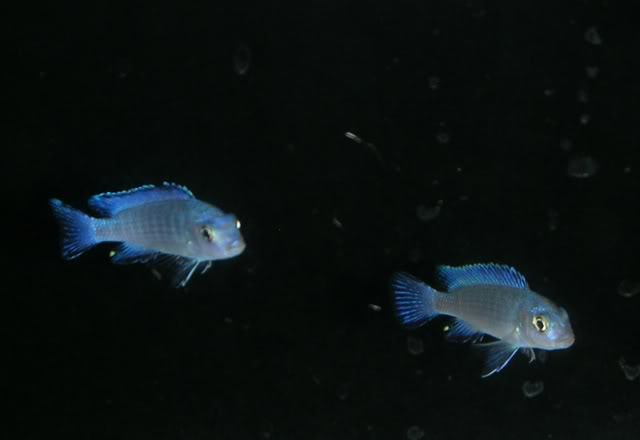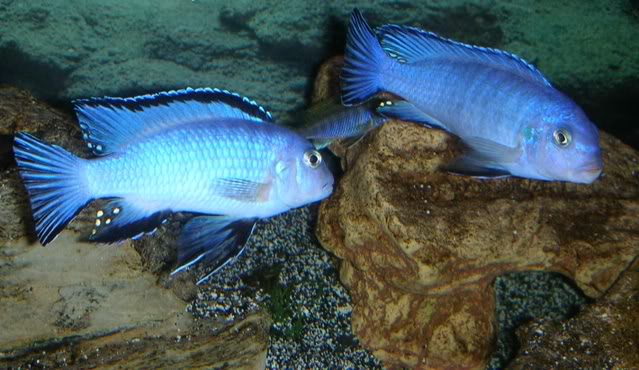Mbuna's are prolific and generally easy to breed if the conditions are right. I've never owned jewel cichlids and know nothing of their breeding habits. (the jewel is not a lake malawi cichlid so it's not possible for it to breed with the other fish you have).
I can't tell if they are male or female. I heard you can look at their bottom fin and if it's pointed, it's a guy, if round, it's a girl. Is that true?
If they're small juvies (2.5" and smaller) it will be hard to determine gender. However at least two dimorphic species in among your group (the bumblebee and auratus), the males undergo color transitions at some point so eventually their genders will be revealed.
With
some species the shape of the anal and dorsal fin tips (pointed-male or rounded-female) as well as the proportional size of the pectoral fins (larger=male)can suggest gender. This is more evident among matured specimens than smaller one's. Fins can suggest gender, not verify gender.
Two socolofi juvies of undeterminate gender due to small size and immaturity:
Two larger matured socolofi's, male (left)/female (right), note fin shape differences even with this monomorphic species
While bumblebee's are among the largest of mbuna species and might be better off (in the long run) in a bigger tank if considering increasing their quantity in the tank, which species you should get more of, that's up to personal preference.
You could start with the acei's (maybe add 4-6 more). They're the least aggressive of the group and are monomorphic and keeping multiple males usually isn't much of an issue (until they surpass 5" but they'll be breeding way before that). Increasing their numbers would be of some benefit from the aggression-control standpoint based on what their tank mates are, though some may say acei's are better off in a larger tank due to their swimming habits and ultimate size.


